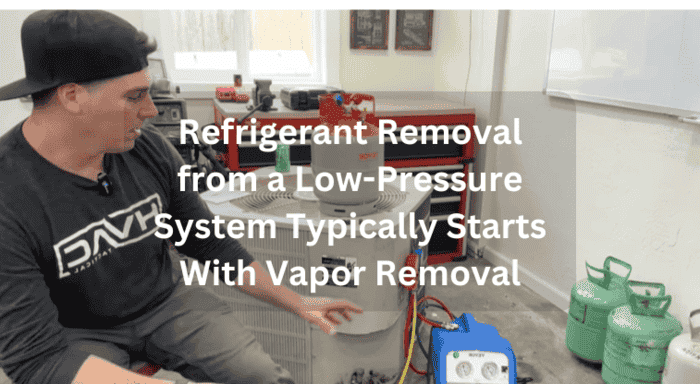MCQ: Refrigerant removal from a low-pressure system starts with __________. What is the correct answer from the following options?
A) vapor removal
B) liquid removal
C) vapor & liquid removal
D) oil separation
Answer: The correct answer is option A: vapor removal. Therefore, refrigerant removal from a low-pressure system starts with vapor removal.
How does refrigerant removal from a low-pressure system start?
The process of removing refrigerant from a low-pressure system begins with vapor removal. To start, technicians connect the recovery unit to the system. This setup ensures that vapor can be safely extracted. The refrigerant vapor is then pulled out, reducing pressure within the system.
Lowering the pressure is crucial as it prevents liquid refrigerant from forming. During this process, careful monitoring is necessary. Watching the gauges helps avoid overloading the recovery unit. It’s also important to check for leaks. Leaks can be dangerous and reduce efficiency.
Ensuring all connections are secure is key. Finally, technicians often use a vacuum pump. This helps to remove any remaining vapor.
But why is vapor removal so important?
Low-pressure systems often contain refrigerants that can be harmful if not handled properly. Vapor removal helps in safely extracting the refrigerant, minimizing risks and ensuring compliance with environmental regulations.











Leave a Review